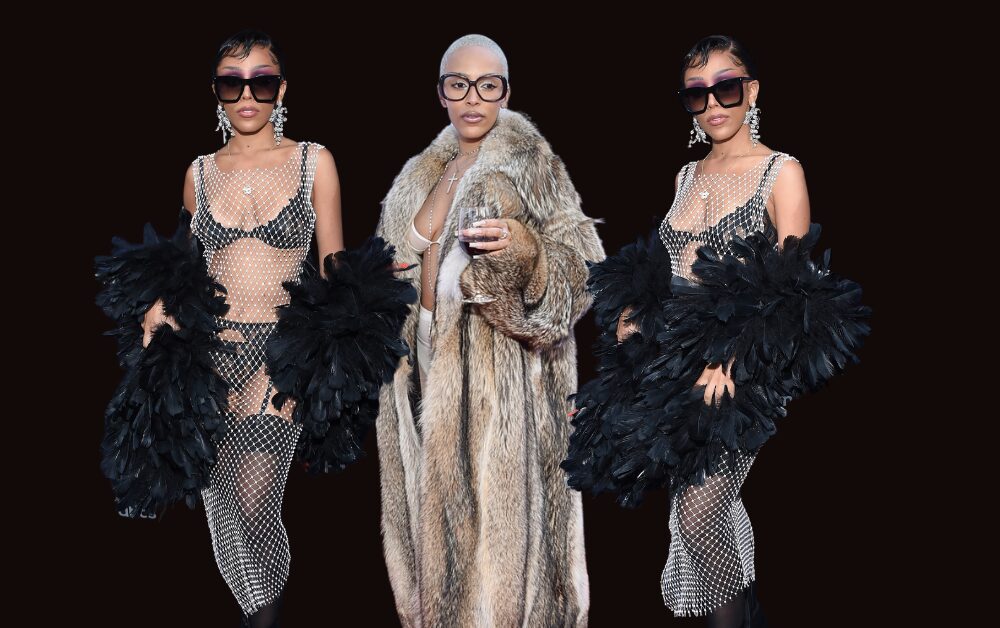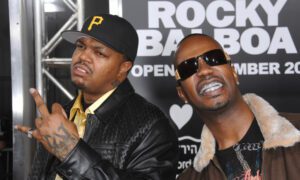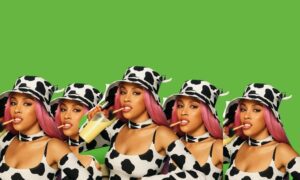
Sampling the Surreal: Doja Cat’s Hidden Influences
Pop’s Chaos Agent
Doja Cat doesn’t just make hits, she makes collisions. Every track feels like she’s DJing through a wormhole, blending disco shimmer, 2000s R&B grooves, and trap percussion until time itself gets confused. Doja’s sound isn’t nostalgia, it’s time travel with attitude.
Underneath the viral antics and “Is she trolling again?” headlines lives a producer-brain with serious chops. Doja builds music like collage art. She splices a sliver of Dionne Warwick soul here, a Busta Rhymes syllable pattern there, a wobbly rave loop from some forgotten German import, and somehow, it all holds together.
That’s her trick: pop music that shouldn’t logically coexist but does because she glues it with personality, humor, and a very specific ear. Doja doesn’t imitate her influences; she mutates them.
From Disco Balls to Rave Whistles
Pop has spent the last few years living in the afterglow of ’90s house revivalism—Drake’s Honestly, Nevermind, Beyoncé’s Renaissance, Dua Lipa’s disco daydreams. But while they went for polish and polish, Doja went for chaos.
Her breakout “Say So” rode on the nostalgia of 1970s disco—the Nile Rodgers-style guitar line, the glossy bass, the four-on-the-floor sway—but she didn’t treat it like a costume. It wasn’t an imitation; it was reincarnation. The groove shimmered, but her rap sections injected modern rhythmic DNA into the mix. It sounded like Studio 54 had Wi-Fi.
Even her more recent tastes skew left-field. She has openly said she has been listening to ’90s German rave music, not Chicago house. That’s such a perfect Doja distinction: same dance floor, different portal. She’s chasing that manic, neon edge—the feeling of being one Red Bull too deep at 4 a.m., when a song becomes a hallucination.
Her nostalgia isn’t a throwback; it’s an experiment. She pulls from the past the way Madlib or The Avalanches do: with deep respect and mischief in equal measure.
Flow So Fast It Bends Space
People still underestimate Doja Cat as a rapper, which is surprising when you consider how deeply rooted she is in hip-hop craft. She’s a student of flow—and specifically of Busta Rhymes. She’s said in interviews that she studies his cadences, and you can hear it in “Tia Tamera” and “Get Into It (Yuh).”
Like Busta, she doesn’t treat rapping as message delivery—it’s percussion. She stacks words until they burst. You can practically hear her grin through the syllables. Her flows are elastic, comic-book fast, and full of little rhythmic pranks: the voice cracks, pitch slides, cartoon energy.
When she raps over something lush or soulful, the contrast makes her voice feel like a punchline and a weapon. That push-pull—elegant samples under volatile flow—is her signature move.
Crate Digging in Heels – Songs Doja Cat Sampled or Interpolated
Doja’s musical omnivory is most evident in her sampling choices. Doja doesn’t reach for the obvious loops; she digs sideways. Doja Cat utilizes samples as character actors within her songs, allowing them to add age, irony, or attitude.
Let’s break a few of them open.
“Paint the Town Red” → Dionne Warwick, “Walk On By” (1964)
This might be her cleverest flip yet. She takes Warwick’s tender heartbreak ballad, written by Burt Bacharach and Hal David, and turns it into a swagger anthem.
Most hip-hop producers reach for Isaac Hayes’s 1969 version, a psychedelic 12-minute dirge that fueled classics by The Notorious B.I.G. (“Warning”), 2Pac (“Me Against the World”), and Wu-Tang Clan (“I Can’t Go to Sleep”). Doja, ever contrarian, skips the Hayes canon entirely and goes straight to Warwick’s pristine original.
That choice changes the emotional temperature. Hayes made “Walk On By” smoky and wounded; Doja makes it sly and defiant. She loops the phrase “walk on by” like a mantra while she boasts about painting the world red with her success. It’s history turned inside out: instead of heartbreak, she’s revenge-dancing through it.
Even Dionne Warwick herself was surprised. She joked on Twitter, “Doja who?” before giving her blessing and calling the sample an “homage.” The result? Doja’s track hit No. 1 on the Billboard Hot 100—sixty years after Warwick’s original ruled AM radio.
“Vegas” → Big Mama Thornton’s “Hound Dog” (1952) via Shonka Dukureh
On the Elvis soundtrack, Doja could’ve easily sampled the Presley version, the one every wedding band knows. Instead, she sampled Shonka Dukureh, who portrayed Big Mama Thornton in the film—and who re-recorded Thornton’s original “Hound Dog.”
That’s deeper than a retro nod. It’s reclamation.
Thornton’s “Hound Dog,” written by Leiber & Stoller, was a blues scorcher that Elvis Presley later cleaned up for mass consumption. Doja, by flipping Dukureh’s take, reclaims the lineage—putting the original Black woman’s howl back at the center of a mainstream hit.
She drapes that growl in 808s and high-hat snaps until it becomes a trap-blues hybrid. The track snarls.
“Sreets” → Paul Anka, “Put Your Head on My Shoulder” (1959)
This one’s pure alchemy. Paul Anka’s version was the squeaky-clean make-out soundtrack for 1950s America. Doja slows it down, pitches it dark, and turns it into a late-night seduction hymn.
The sample hits like déjà vu through fog. You recognize it, but it feels corrupted, like a prom memory gone wrong. It’s half camp, half hypnosis.
Anka reportedly loved the flip—it gave the song a second life among Gen Z listeners. That’s how Doja works: she turns your grandparents’ innocence into your favorite hook.
“Kiss Me More” → Olivia Newton-John, “Physical” (1981) (interpolation)
Here she doesn’t sample; she rebuilds. “Kiss Me More” borrows the melodic contour of Olivia Newton-John’s “Physical” but reconstructs it with clean, shimmering chords and SZA’s vocal interplay. It’s a wink, not a theft—proof she can quote the past without pressing play on it.
“Shutcho” → 10cc, “I’m Not in Love” (1975)
On Scarlet, she sneaks in a fragment of the 10cc classic—a song famous for its whispered choirs and sterile romance. Doja twists it into something icier, almost nihilistic. Where 10cc said “I’m not in love” with denial, Doja says it with a smirk.
Genre Is Just a Suggestion
Try labeling Doja Cat and you’ll end up sounding like you’re naming planets: pop, rap, R&B, dance, Afrobeats, industrial, jazz-adjacent.
Her samples act like teleporters between genres. “Paint the Town Red” leans on classic soul but spits like 2023 trap. “Vegas” revives the blues while feeling like a drill beat. “Freak” bridges crooner pop and slowcore R&B.
She isn’t switching genres; she’s fusing their DNA. Sampling is how she keeps the seams invisible.
It’s the same impulse that drives great hip-hop producers—connect eras, rewrite context—but Doja folds that mentality into pop songwriting. That’s why she feels less like a pop star and more like a one-woman production movement.
The Process: How She Bends History
Doja’s approach to sampling isn’t nostalgia-bait; it’s design. Her process seems to follow a pattern:
- Find the original, not the copy. She’ll skip the obvious sample (Isaac Hayes) and go straight to the root (Dionne Warwick).
- Flip the meaning. The heartbreak of “Walk On By” becomes a source of self-confidence. The warning of “Hound Dog” becomes dominance.
- Blend live and digital. She often re-records instruments or layers her own harmonies over the sample to blur boundaries.
- Preserve imperfection. Doja loves texture—vinyl hiss, breath, grit. It’s what keeps her tracks from sounding like sterile AI pop.
- Hide humor in the mix. Even when she’s deadly serious, her arrangements wink. “Mooo!” was the blueprint: absurd but sonically airtight.
That’s why her songs feel alive. They twitch, glitch, breathe. She builds pop that refuses to sit still—songs that constantly remind you of a human being with curiosity and chaos issues made them.
Weird Is the Point
Doja Cat’s weirdness isn’t an accident—it’s a working method. “Mooo!” was a thesis statement. She made it herself in her bedroom, layering samples, humor, and pure instinct. That track proved she could make the internet laugh and dance simultaneously.
Every hit since has refined that formula: raw creativity dressed in high-gloss absurdity. Her weirdness is productive—it’s how she stays close to the creative impulse most pop stars lose once their budgets get big.
You get the sense that even now, she could open Ableton at 3 a.m., drag in a random old vinyl rip, and find gold before sunrise.
Past, Future, Everything at Once
Doja Cat’s music lives in the overlap between eras. She’s disco and trap, Busta Rhymes and Big Mama Thornton, nostalgia and dystopia—all orbiting the same strange planet.
She doesn’t just borrow from history; she argues with it. She’s not reviving sounds—she’s remixing time itself.
Each song feels like the past and future dancing until one gives up and laughs.
That’s not coincidence. That’s the Doja design: chaos made cohesive.
Playlist Homework: The Doja Deep Dive
- “Paint the Town Red” – Dionne Warwick meets devilish swagger.
- “Vegas” – Blues fury reborn in a trap body.
- “Get Into It (Yuh)” – Busta Rhymes’ spirit in a pink wig.
- “Freak” – Doo-wop under moonlight and menace.
- “Streets” – 2003 R&B ghost turned viral slow burn.
- “Kiss Me More” – Pop’s most polite innuendo.
- “Shutcho” – Soft-rock denial turned modern detachment.
Final Word
Doja Cat isn’t riding trends—she’s time-sampling. Every track she makes is part collage, part confrontation, part love letter to the weird corners of music history.
She’s the rare artist who can make you nostalgic for songs that didn’t exist before she made them.
Call it surreal. Call it pop. Identify it as whatever you want. Just don’t call it predictable.










